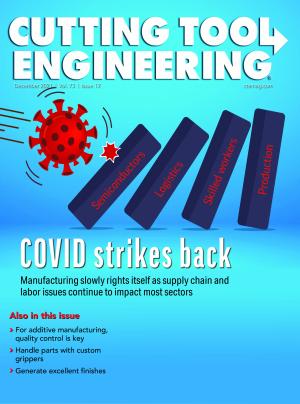Researchers have discovered an electronic property at the frontier between the thermal and quantum sciences in a specially engineered metal alloy — and in the process identified a promising material for future devices that could turn heat on and off with the application of a magnetic “switch.”
In this material, electrons move like massless photons or light, which is an unexpected behavior but a phenomenon theoretically predicted to exist here. The alloy was engineered with the elements bismuth and antimony at precise ranges based on foundational theory.
Researchers found that under the influence of an external magnetic field, these oddly behaving electrons manipulate heat in ways not seen under normal conditions. On both the hot and cold sides of the material, some electrons generate heat, or energy, while others absorb energy, effectively turning the material into an energy pump. The result is a 300% increase in thermal conductivity.

The cones illustrate the equations of motion of electrons when an external magnetic field is applied to the bismuth alloy engineered for the study. Green lines and purple lines represent electrons that generate and absorb energy, respectively. image courtesy of Renee Ripley
If the magnet is taken away, the mechanism turns off.
“The generation and absorption form the anomaly,” said study senior author Joseph Heremans, professor of mechanical and aerospace engineering and Ohio eminent scholar in nanotechnology at Ohio State University. “The heat disappears and reappears elsewhere. It is like teleportation. It only happens under very specific circumstances predicted by quantum theory.”
This property, as well as the simplicity of controlling it with a magnet, makes the material a desirable candidate as a heat switch with no moving parts, similar to a transistor that switches electrical currents or a faucet that switches water. The material could cool computers or increase the efficiency of solar-thermal power plants.
“Solid-state heat switches without moving parts are extremely desirable, but they don’t exist,” Heremans said. “This is one of the possible mechanisms that would lead to one.”
The bismuth-antimony alloy is among a class of quantum materials, Weyl semimetals, whose electrons don’t behave as expected. The materials are characterized by properties that include negatively and positively charged particles that behave as massless particles. The electrons involved react as if the material contains internal magnetic fields that enable the establishment of new pathways along which those particles move.
Study co-author Nandini Trivedi, professor of physics at Ohio State University, described the new pathway along which lightlike electrons manipulate heat among themselves as a highway that seems to appear out of nowhere.
“Imagine if you were living in a small town that had tiny roads, and suddenly there’s a highway that opens up,” she said. “This particular pathway only opens up if you apply a thermal gradient in one direction and a magnetic field in the same direction. So you can easily close the highway by putting the magnetic field in a perpendicular direction. No such highways exist in ordinary metals.”
— Emily Caldwell
Related Glossary Terms
- turning
turning
Workpiece is held in a chuck, mounted on a face plate or secured between centers and rotated while a cutting tool, normally a single-point tool, is fed into it along its periphery or across its end or face. Takes the form of straight turning (cutting along the periphery of the workpiece); taper turning (creating a taper); step turning (turning different-size diameters on the same work); chamfering (beveling an edge or shoulder); facing (cutting on an end); turning threads (usually external but can be internal); roughing (high-volume metal removal); and finishing (final light cuts). Performed on lathes, turning centers, chucking machines, automatic screw machines and similar machines.

